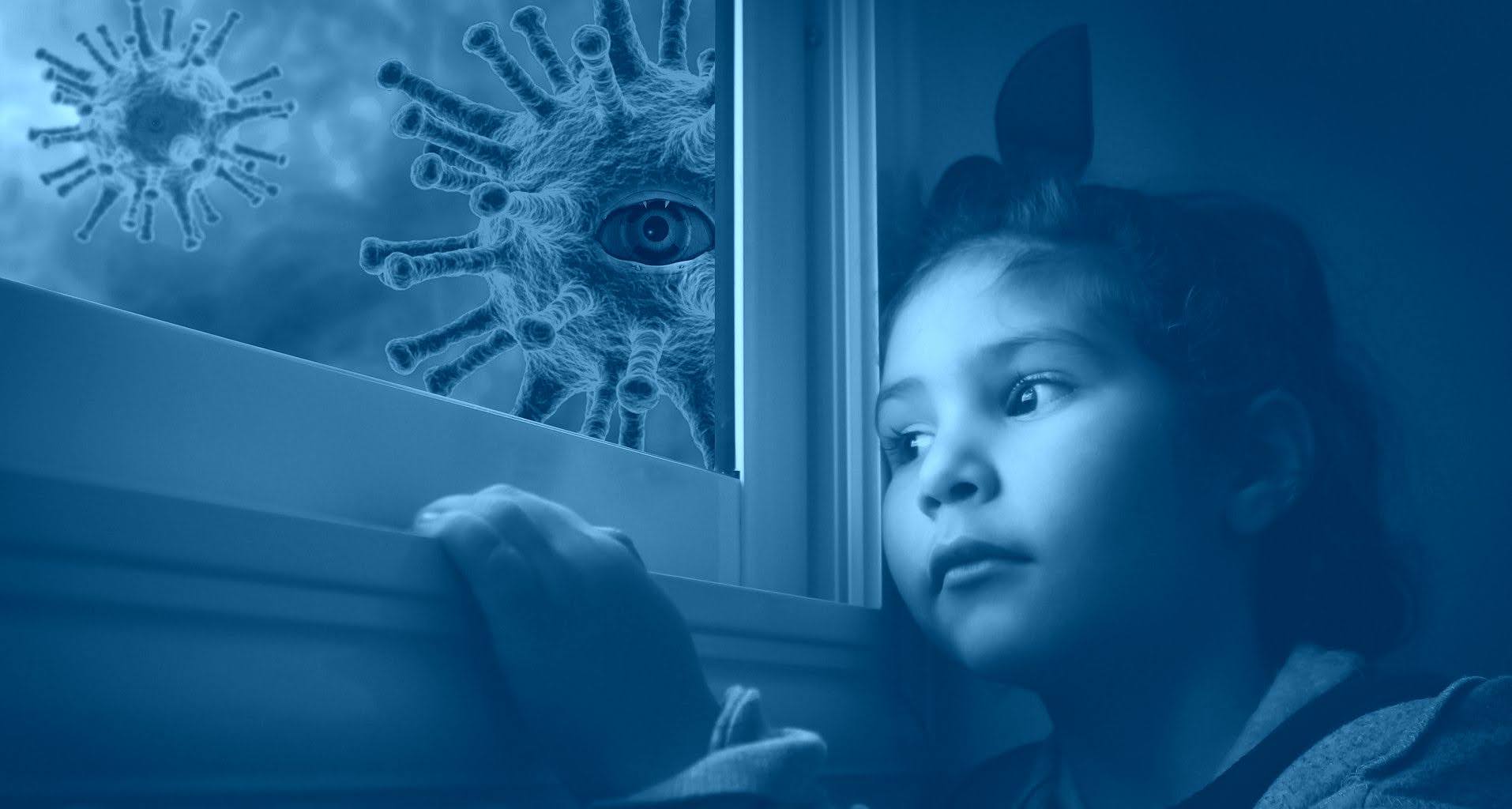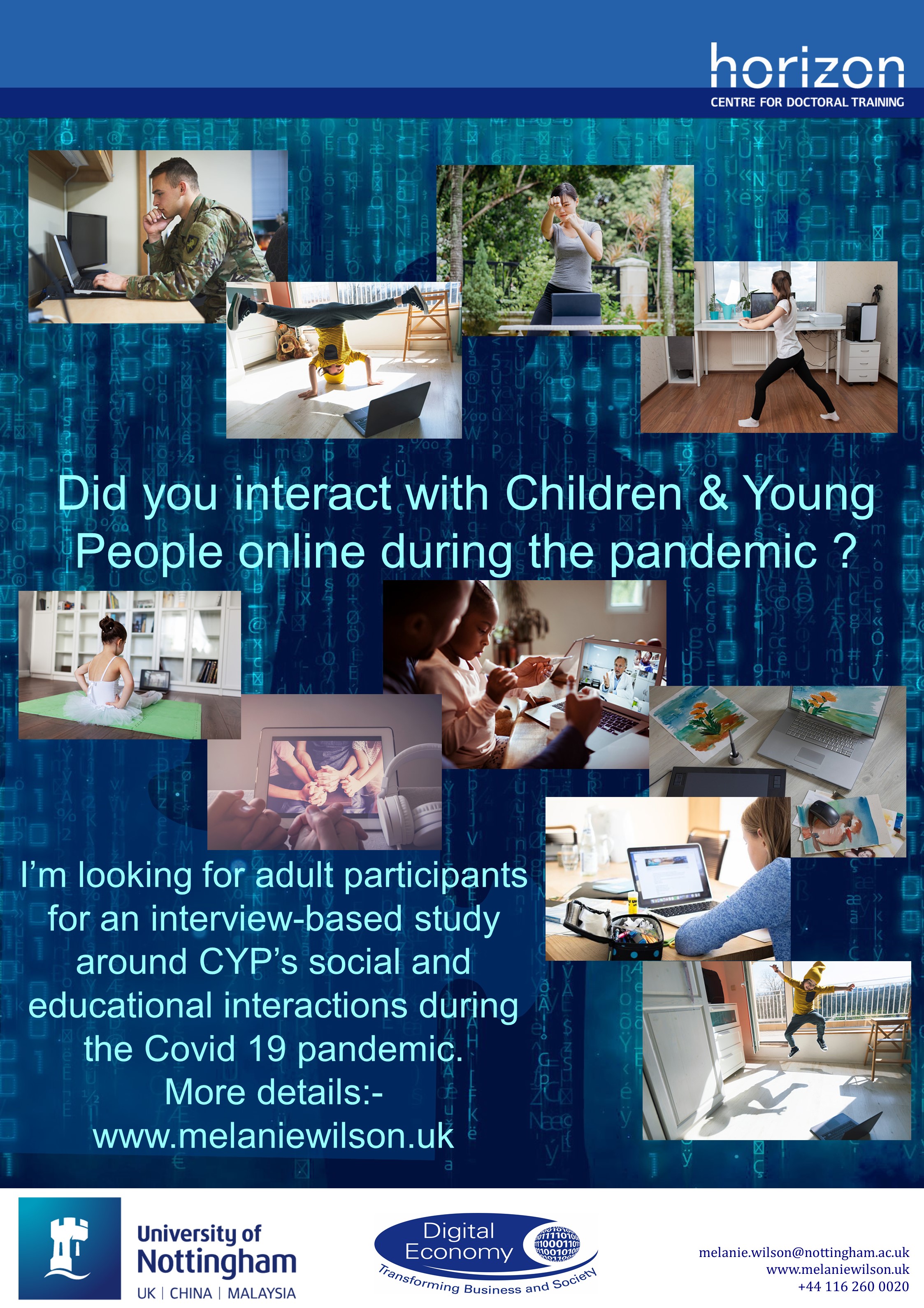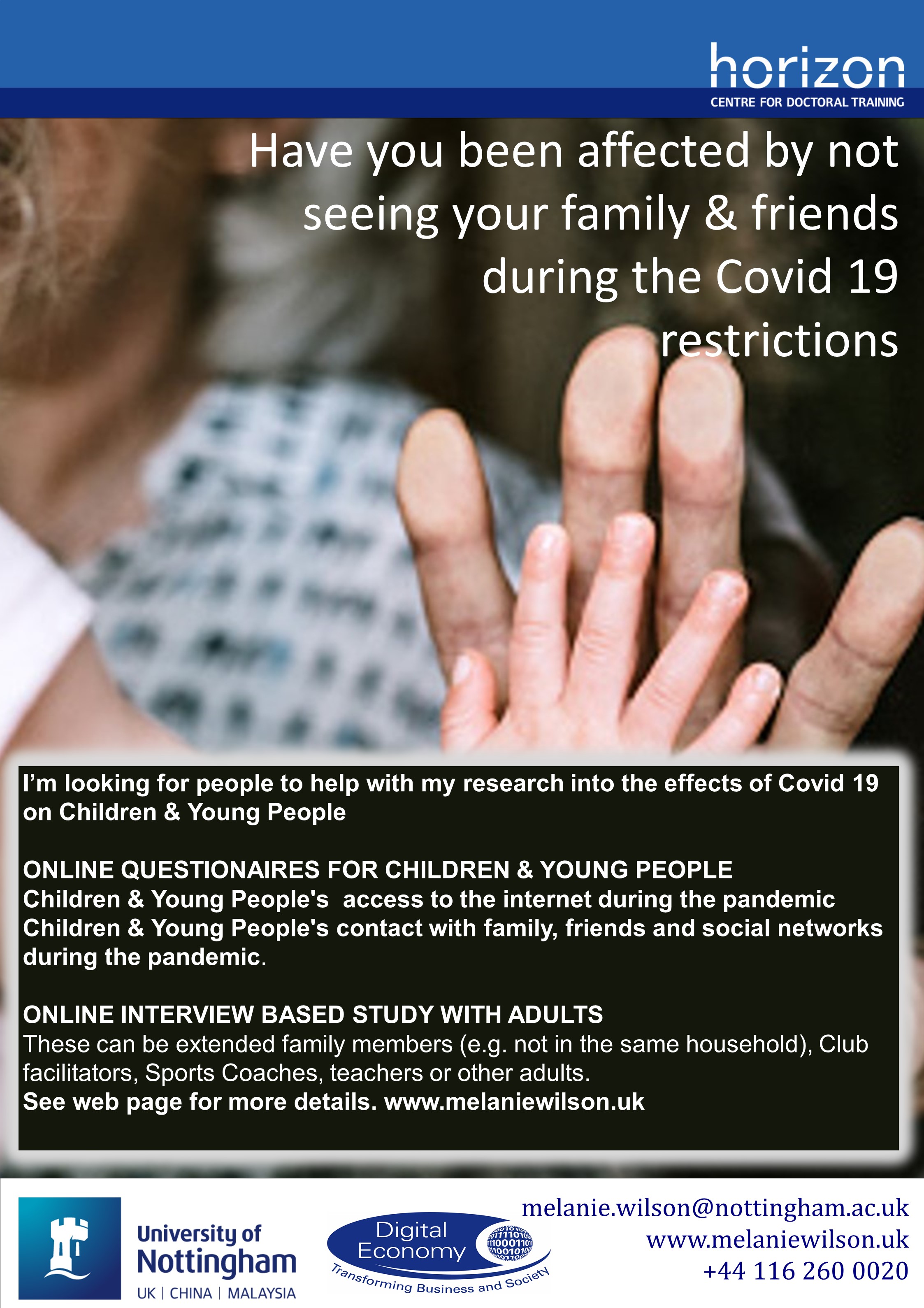Vulnerability in Children & Young People; The effects of the pandemic online & offline.

Following the first UK lockdown in March 2020, many childrem young people and their adults were forced online for multiple activities. Whilst CYP and adults both tended to have an online presence in the modern worldprior to this, this presence for many was suddenly increased enormasly. This is became unavoidable with everyday functions taking place online rather than in the real world. School work went online, Homework continued to be set online. Social interaction was mostly online. Research for school topics are online and communication is online in the form of messaging such as instagram, whatsapp. Snapchat etc. Games moved from the playground and street to online, in a world that is inundated by news of the dangers the world poses, often inaccurately.
.

This was possible, for the first time in history, for many. But it left some without access to social and educational access for weeks and months at a time, due to lack of devices, lack of connectivity and lack of a space in which to connect with the world outside the isolated home.
My research explored the effects of these moves on Children and Young People and it relation to CYP's vulnrability, particularly looking at the potential for digital or pandemice induced Adverse Childhood Experiences (ACEs).
............
.................................................

People can be more of less vulnerable depending on the numbers of ACEs (adverse childhood experiences) they have encountered. The current literature mainly revolves around statistics relating to crime and prison, injury and death, education and other “real world” factors.
With increasing use of online interaction in young people's lives, it is proposed that the factors that increase vulnerability are potentially magnified online. This is suggested by two main causal factors. The first is that from an Evolutionary Psychology prospective we, as a species, still react to others as if we were physically present with them in the Environment of Evolutionary Adaptiveness (EEA). This means we can miss online signs of danger seen in physical encounters which ensured our ancestors survival.
Those with vulnerabilities and ACEs were more likely to be subjected to more ACEs and had a less comfortable existance physically and were shown to be more restricted digitally.

This research interviewed qualified counsellors, therapists and mental health experts who have been directly “meeting” with children and young people (CYP) before and during the Covid 19 pandemic. For the purpose of this research “meeting” involves face to face, telephone, chat and video support for mental health purposes.
Qualitatively topical narrative approaches were used to explore the ways this online interaction was experienced by the practitioners and their perceptions of how their clients adjusted and responded to the differences in such interactions.

I gathered information from 2000 CYP in Primary and Secondary Schools regarding their access to the digital world for schoolwork. This included their device access, internet access and help from others to access work.
A second questionaire gathered information about their social interactions with extended family, friends, clubs, sports groups and religious groups.
This enabled me to look at the differences between CYP's experiences over the pandemic period.
In a further study I interviewed adults who had extended social and/or educational contact and who have been directly “meeting” with children and young people (CYP) before and during the Covid 19 pandemic. For the purpose of this research “meeting” involves face to face, telephone, chat and video support for social and/or educational purposes.
During this time many adults had to rapidly change their meeting methodology with CYP and adapt to very new circumstances with little or no training or equipment.
The purpose of the interviews study was to gain insight qualitatively into the ways this was achieved, the experiences of the adults and their perceptions of how the CYP adjusted and responded to the differences.
....Q.........................................................

Ainsworth, M. D. S., Blehar, M. C., Waters, E., & Wall, S. N. (2015). Patterns of attachment: A psychological study of the strange situation. Psychology Press.
Bartlett, J. (2015). The dark net: Inside the digital underworld. Melville House.
Bekoff, M., & Byers, J. A. (2004). Animal play: Evolutionary, comparative and ecological perspectives. Cambridge: Cambridge University Press.
Berg, L., Rostila, M., Saarela, J., & Hjern, A. (2014). Parental death during childhood and subsequent school performance. Pediatrics, peds-2013.
Borelli, J. L., Compare, A., Snavely, J. E., & Decio, V. (2015). Reflective functioning moderates the association between perceptions of parental neglect and attachment in adolescence. Psychoanalytic Psychology, 32(1), 23.
Bowlby, J. (1997). Attachment (Vol. 1). Random House.
Bruce, T. (2010). From Reaction to Re?ection. Children and Adolescents in Trauma: Creative Therapeutic Approaches, 18, 199.
Daly, M., & Wilson, M. (1999). The truth about Cinderella: A Darwinian view of parental love. Yale University Press.
Farb, N. A., Segal, Z. V., Mayberg, H., Bean, J., McKeon, D., Fatima, Z., & Anderson, A. K. (2007). Attending to the present: mindfulness meditation reveals distinct neural modes of self-reference. Social cognitive and affective neuroscience, 2(4), 313-322.
Fox, E., Griggs, L., & Mouchlianitis, E. (2007). The detection of fear-relevant stimuli: Are guns noticed as quickly as snakes?. Emotion, 7(4), 691.
Gardner, D. (2009). Risk: The science and politics of fear. Random House.
Harkins, M. (2013). Managing risk and information security. New York City: Apress, 87-102.
Hetherington, E. M. (2014). Coping with divorce, single parenting, and remarriage: A risk and resiliency perspective. Psychology Press.
Joshi, M. S., MacLean, M., & Stevens, C. (2018). Accident frequency and unrealistic optimism: Children’s assessment of risk. Accident Analysis & Prevention, 111, 142-146.
Landreth, G. (2012). Play therapy. New York: Routledge.
Lamb, R., Joshi, M.S., Carter, W., Cowburn, G. and Matthews, A. (2006). Children's acquisition and retention of safety skills: the Lifeskills program, Injury Prevention, 12, 161-165
Lichtenstein S., Fischhoff B., and Phillips L.D., "Calibration of Probabilities: The State of the Art to 1980," (1982) in Judgement under Uncertainty: Heuristics and Biases, eds. D. Kahneman, P. Slovic, and A. Tversky, Cambridge University Press, Cambridge, , pp. 306-334,
Luthar, S. S. (2015). Resilience in development: A synthesis of research across five decades. Developmental Psychopathology: Volume Three: Risk, Disorder, and Adaptation, 739-795.
Pham, S., Porta, G., Biernesser, C., Walker Payne, M., Iyengar, S., Melhem, N., & Brent, D. A. (2018). The Burden of Bereavement: Early-Onset Depression and Impairment in Youths Bereaved by Sudden Parental Death in a 7-Year Prospective Study. American Journal of Psychiatry, appi-ajp.
Sarkar, M., & Fletcher, D. (2017). How resilience training can enhance wellbeing and performance. In M. F. Crane (Ed.), Managing for resilience: A practical guide for employee wellbeing and organizational performance (pp. 227-237). New York, NY, US: Routledge/Taylor & Francis Group
Slade, A. (2005). Parental reflective functioning: An introduction. Attachment & human development, 7(3), 269-281.
Slovic, P. (2016). The perception of risk. Routledge.
Tracey, M. R., & Polachek, S. W. (2018). If looks could heal: Child health and paternal investment. Journal of health economics, 57, 179-190.
Trayser J R (2016) The ACEs Revolution: The impact of Adverse Childhood Experiences
Williams, R., Elliott, I. A., & Beech, A. R. (2013). Identifying sexual grooming themes used by internet sex offenders. Deviant Behavior, 34(2), 135-152.
ACTO Conference June 2021 "What can we learn, from the pandemic, about closing the digital divide for Children and Young People needing mental health interventions."
3 Min presentation May 2021 " Vulnerability, Lockdown & the Pandemic; The effects on Children & Young People"
LTS Conference April 2021 Less can be more- Telling your story through Zoom; observations on power dynamics in story-telling with Children and Young people during therapeutic interventions through the pandemic."
June 2021 “Family Mental Health in the Wake of the Pandemic” Lay audience. Online for Level 1&2 English Functional Skills students funded by a number of different projects including YES Youth Employment Scheme, Covid 19 and Brighter Futures (1 hour 20 mins)
September 2021 “Access Equality” presentation for the HDI book online
February 2022 Training session on working with groups of children online & interview analysis for Horizon CDT Students, University of Nottingham
Blog posts on Media coverage and activities of the Intervention
Ellerby, Z., McCulloch, J., Wilson, M., & Wagner, C. (2020). In Critical Information Infrastructures Security: 14th International Conference, CRITIS 2019, Linköping, Sweden, September 23–25, 2019, Revised Selected Papers 14 (pp. 31-42). Springer International Publishing. Exploring how Component Factors and their Uncertainty Affect Judgements of Risk in Cyber-Security In Critical Information Infrastructures Security: 14th International Conference, CRITIS 2019, Linköping, Sweden, September 23–25, 2019, Revised Selected Papers 14 (pp. 31-42). Springer International Publishing.
Wilson, M (2023) " Digital Access Inequality among Vulnerable Children and Young People: Did the pandemic cause a snowball effect?” in Hayes, S., Jopling, M., Connor, S., & Johnson, M. (Eds.) (2023). Human Data Interaction, Disadvantage and Skills in the Community: Enabling Cross-Sector Environments for Postdigital Inclusion. Cham: Springer. (Forthcoming)
Wilson M & Perez Vallejos, E (2021) The Role of Neuroscience in the Effects of Adverse Childhood Experiences in Relation to Risk Taking, with Specific Reference to Risk Assessment During a Pandemic, a Review of the Literature
This author is supported by the Horizon Centre for Doctoral Training at the University of Nottingham (RCUK Grant No. EP/L015463/1) and Northamptonshire Police.